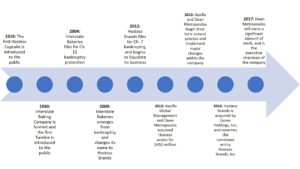What’s NACCO’s Margin of Safety?
After reading my write-up, a member asked me about the margin of safety in NACCO (NC):
“…why would someone put half of their portfolio weight in a stock like this where there is customer concentration risk plus a real risk that one of the customers may close shop? Agree that its FCF yield is 10% or so but does it deserve that kind of weight?”
I don’t want to exaggerate the safety of this stock. I didn’t write it up for a newsletter. This isn’t a recommendation for anyone else to buy it. I put 50% into it knowing I would have future control over decisions to sell that 50%. I don’t think I’d recommend this stock to anyone else because the headlines will all be negative and that is very tough for people to hold through.
Having said that, let me take you through how I might have seen the potential margin of safety when I bought the stock at under $33 a share on October 2nd. The way I framed it, the margin of safety in NACCO was a lot higher than what I can get in other stocks. That’s despite the customer concentration and the possibility those concentrated customers are coal power plants about to be shut down.
When I bought the stock, I believed it was then trading at something like a 10% to 15% free cash flow yield. I also believed that the company’s balance sheet will be essentially unleveraged pretty soon (taking into account build up of cash during this year, the expected $35 million cash dividend from Hamilton Beach just before the spin, etc.). The parent company has liabilities but these are not immediately payable in full. Meanwhile, the unconsolidated mines pay cash dividends immediately each year. So, what I’m saying here is that I don’t believe the parent company is more leveraged, more short of cash relative to potential liabilities, etc. than an average stock.
So, the balance sheet is like an average stock.
But, a normal, unleveraged stock usually trades at about a 5% free cash flow yield.
So, NACCO’s free cash flow yield is 5% to 10% higher than an average stock while the balance sheet is similar.
Now, if it is true that when NACCO loses a big contract this means it mostly loses an equal percentage proportion of both revenues and expenses (this is an exaggeration – but I don’t think it’s a huge exaggeration because the mines really are administered very independently and are non-recourse to NACCO), you can kind of think about your margin of safety and the value in this stock as follows…
NACCO has a free cash flow yield no lower than 10% to 15%.
A normal stock has a free cash flow yield no higher than 5%.
5% is 0.50 to 0.67 times less than 10% to 15%. Therefore, NACCO would decline to a normal valuation after it has lost about 50% to 65% of its earnings. Let’s …
Read more
